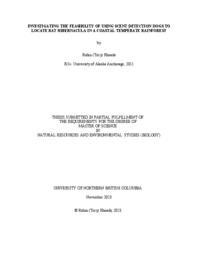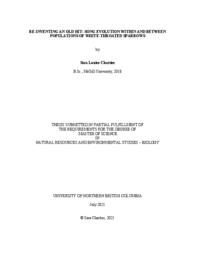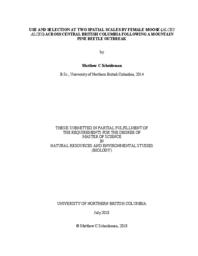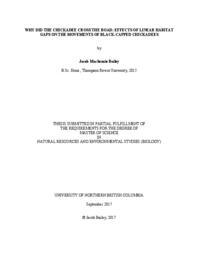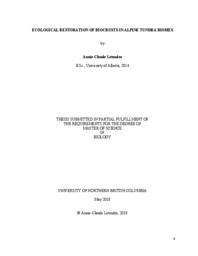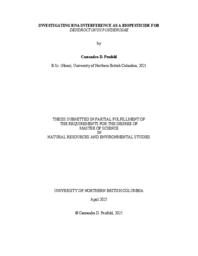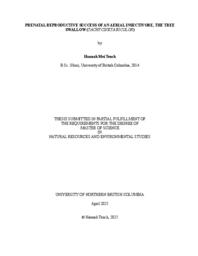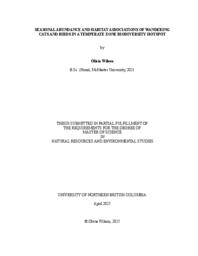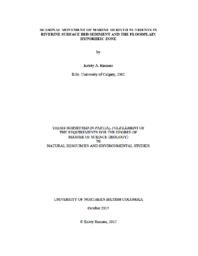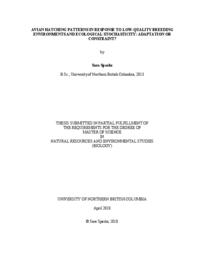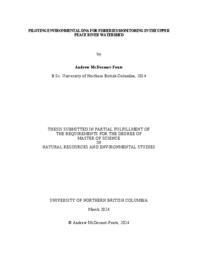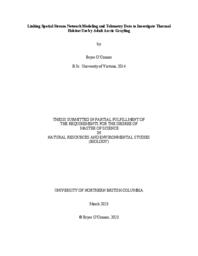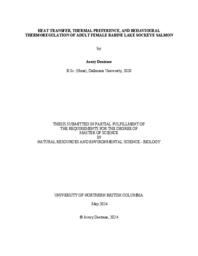Digital Document
Little brown bat (Myotis lucifugus) populations have dramatically declined in North America as a result of white-nose syndrome, a fungal pathogen. The identification and protection of hibernacula is important to conservation efforts for the species…
Digital Document
Cultural evolution of birdsong occurs when songs change over generations and such changes can spread directionally or via drift within and between populations. The objective of this thesis was to document the emergence and spread of a novel song…
Digital Document
Kokanee, the non-anadromous life history form of Oncorhynchus nerka, use lacustrine habitat in watersheds draining into the north Pacific Ocean. Kokanee have also been widely introduced into reservoirs following impoundment of rivers due to the…
Digital Document
Understanding the mountain pine beetle detoxification systems is vital for predicting its continued spread into the novel jack pine host. Phylogenetic analyses were conducted for mountain pine beetle catalase, glutathione peroxidase, superoxide…
Digital Document
Caribou (Rangifer tarandus) are declining worldwide. Across Canada, numerous populations have been extirpated over the past 50 years. In many cases, the mechanism of these declines is unsustainable predation exacerbated by apparent competition.…
Digital Document
Digital Document
Applications of environmental DNA (eDNA) represent one of the most significant recent advances in aquatic species monitoring. eDNA has the potential to dramatically increase the effectiveness and efficiency of fisheries monitoring across large…
Digital Document
River networks have a high amount of thermal habitat heterogeneity which is a critical abiotic factor driving freshwater fish distribution. The fitness repercussions of residing outside a species’ optimal thermal limits, and the resulting…
Digital Document
Pacific marten (Martes caurina) may benefit from invasive or non-native species that occur across some coastal areas of the Pacific Northwest. I used remote-camera trapping and stable-isotopes of carbon and nitrogen to infer resource-use strategies…
Digital Document
Glyphosate-based herbicides (GBH) are highly effective, nonselective herbicides that have been used in British Columbia’s forest industry since the early 1980s to remove deciduous vegetation competing with commercially important coniferous tree…

